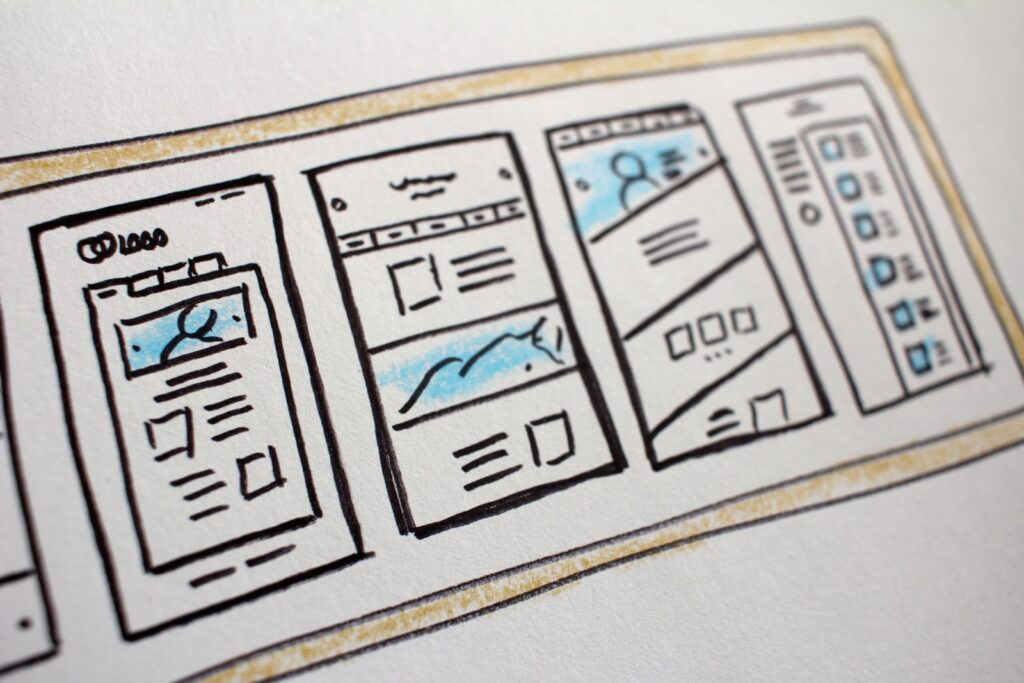In this blog we will see how Web Designing Has Evolved in the Past Decade..
Technology has changed rapidly over the past decade. From the way we communicate to how we find information, every aspect of our day-to-day life is transforming. Even marketing techniques that were once adequate are now outdated, and businesses not keeping up with evolving trends are eventually plummeting to their downfall.
It’s impossible to keep up with advancing technology in the modern era because it’s changing too fast. If you go back only a few years, and someone were to mention “online video content” to you, your immediate response will be confusion and hesitation. But today, it’s a typical marketing strategy employed by most organizations. With shifting tastes, styles, and attitudes, tendencies towards specific web designs continue to come and go. For instance, visual characteristics that used to appeal to the audience may now have to take a backseat for efficient website functionality.
The observed changes in web designing are profound and beyond anything, experts could have ever expected or imagined. Here are six ways design and web development have evolved in the past decade alone.
6 Ways Web Designing Has Evolved in the Past Decade
1. Lightning-speed change
All the recent changes in website design are because of the advancing and modern technology. If you remember the early days of designing a webpage, you’ll probably recall how complicated it was. First, you had to know how to code HTML. Secondly, the resolution and size of your images had to be small and compact, or it would bring your loading speed to a slow crawl.
With more people gaining access to the internet each year, new technology was crucial to maintain high speeds that support an increase in online traffic. Since companies now focus more on on-site visual elements for their web design, optimizing images while minimizing the server response time is essential.

2. Domination of standard website layout
The standard website layout you typically see today developed after a few initial designs weren’t a success. Web designers saw that text-heavy sites were not as popular with the public, and visitors were less likely to interact with the available content. Instead, people gravitated more towards categorized information which was easier to find. This layout often incorporated left bar categories and top bar navigation to make the experience user-friendly and more engaging for the visitors.
Around the same time, web pages written in Flash became more popular since HTML was highly limited. While coding in HTML prevented restricted users from several features, Flash allowed web designers a lot more freedom to make the web page more interactive.
3. Popularity of drop-down menus and graphics
With more websites recognizing the popularity of categorization, there was a rise in drop-down menus on web pages. Soon they became a norm, and this design started trending to make the user experience more fun and engaging. Several web pages adapted a magazine-like layout by incorporating narrow columns and using textures to highlight different areas of the website. Infographics also became widely popular, with many designers preferring to organize information through graphic imagery.
Video content and backgrounds also became a trend for top-range websites since increasing broadband speeds mitigated server response issues. The use of video-based content grew exponentially from here on out. Several programs integrated them as awareness campaigns, explanatory guides, and advertisements.
4. Adoption of responsive web design
While in 2009, smartphone use was becoming popular, it remained relatively unsophisticated. The ordinary person couldn’t afford a smartphone as easily as they can get today, so web designers mainly focused on creating pages for desktop and laptop screens. Due to this, user experience was limited and even dependent on specific browsers. But since then, web design has significantly transformed.
In 2010, however, there was a sudden increase in people purchasing smartphones, tablets, and smart TVs. This changing trend pushed web designers to create pages that could adapt to all screen sizes. Many people prioritize convenience over anything else, so it was crucial for web pages to cater to individuals’ needs and make content easily accessible. In recent years, responsive design has gone beyond being just a trend and has become a necessity. It ensures that websites appear professional and credible and get more traffic than websites designed for a specific browser only.
5. Tools for simplifying website building
A decade ago, when you wanted to build a well-designed, multi-purpose, high-quality website, you had to hire an expert and spend good money. But over the years, different tools and platforms such as WordPress and Shopify have been developed that allow professionals to build websites quickly and efficiently. Even someone with limited technical expertise can use these self-sufficient tools to create websites and save money.
Whether you wish to build a news website, e-commerce store, corporate website, or a high-quality blog space, these tools come in incredibly handy.
6. Integration of social media
Social media platforms like Twitter and Facebook have existed for more than a decade. But it wasn’t until mobile technology took off in the early 2010s that it could achieve its true potential. This popularity of social media use pushed designers to seek ways to connect individuals’ online activity to their social profiles. These integration technologies allow you to register on third-party websites using your existing social media accounts and share content with your friends online.
Social media and web design go hand in hand in today’s market. They are complementary components of building a business’s online presence and engaging with clients in real-time.
Conclusion
The techniques used for web designing today are a world away from what was being done over a decade ago. They’re faster, more intuitive, and feature various elements to help businesses market products and services to customers. Since technology is still rapidly evolving, it’s difficult to speculate how web designing will change in the next few years. But in terms of how things are moving, we’re likely to see more minimalist and simple layouts requiring fewer clicks and several illustrations on the web page.


























